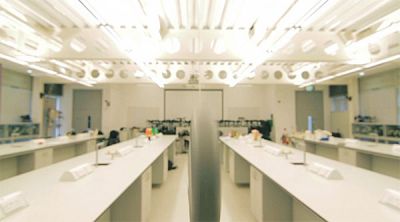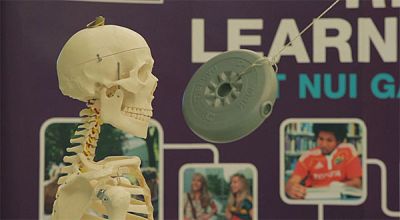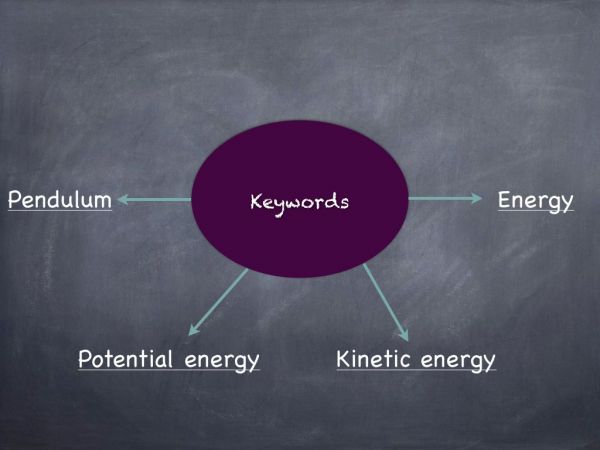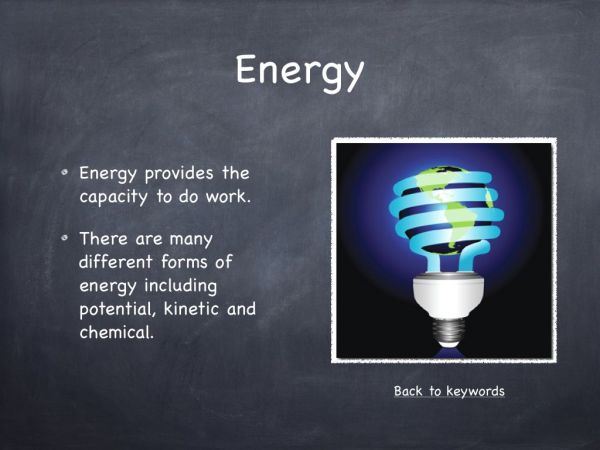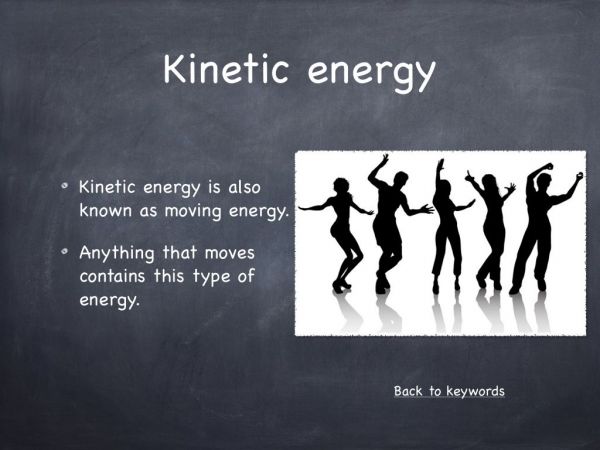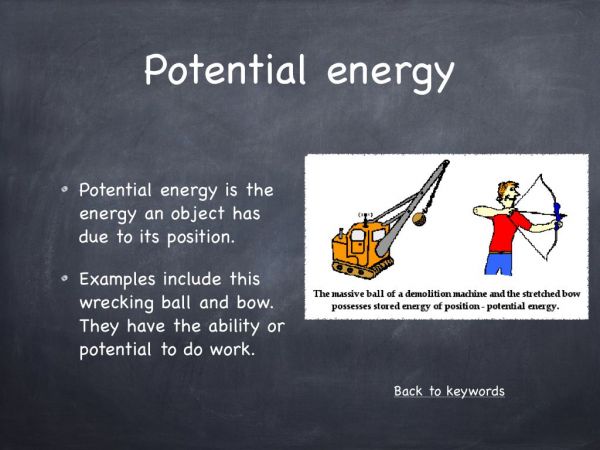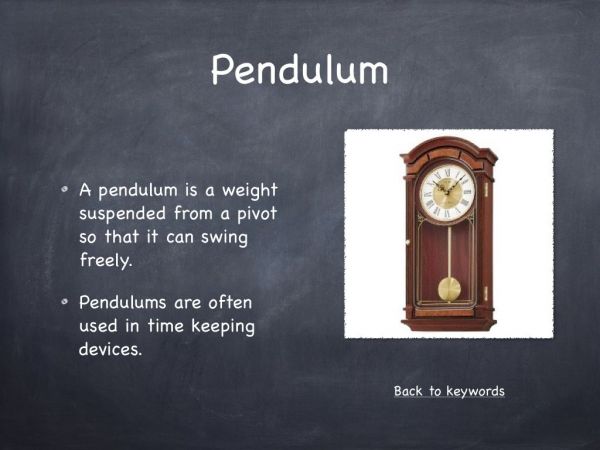This experiment investigates the concept of the conservation of energy. This is the principle that energy cannot be created or destroyed; it can only be changed from one form to another. In the experiment, a weight is tied onto a piece of string and set up like a pendulum.
Methodology
Materials
- String (strong)
- Weight
Method
In the demonstration we used a 2.2 kg weight and some inextensible string. Essentially this means that the string cannot stretch. The location for the demonstration has to contain enough area for the pendulum to be able to swing freely. Any size weight or object can be used as long as the mass is large enough to induce a pendulum when tied to a string. Ideally, the angle of the pendulum should be less than 5 degrees so that the pendulum swings smoothly and at a slow pace.
The weight should be held in place and dropped/released from that position.
Do not push it. If you push the weight, you are giving the weight extra kinetic energy along with its potential energy. This will nullify the experiment and can be dangerous.
The weight will not come up as high as the release height due to energy loss in the form of sound and friction.
Tips
Try the pendulum a few times to get a straight swing and analyse the string for any signs of stress.
*Precautions/Safety
Theory behind the hook
When the weight is lifted into the air, it contains potential energy. This means that if the weight is dropped it will definitely exert a force. This potential energy comes from the fact that the weight is under the force of gravity. When the weight moves, its potential energy is changed to kinetic energy. Kinetic energy is moving energy. As the pendulum swings, the energy is always changing from potential to kinetic and back again (figure 4). In perfect conditions, the pendulum will continue to swing indefinitely. However, the pendulum loses energy due to friction between the weight and the air.
How this hook works
The hook works on the basis that it looks dangerous, but in fact is very safe. This is especially important when a volunteer places themselves in front of the pendulum. With this element of danger, pupils will be asking themselves whether or not the volunteer is safe. This is what draws them into the action.
Questions & Answers
Lower Order
- State the principle of conservation of energy.
Energy cannot be created or destroyed but can be changed from one form to another. - What is kinetic energy?
Energy due to movement - What is potential energy?
Energy due to position - What are the energy conversions shown in this video?
The pendulum converts potential energy to kinetic and then back to potential, as it swings from one point to another. Energy is lost to air friction and to sound. As the pendulum swings, it hits and forces its way through the air. This requires energy and takes away from the kinetic energy of the pendulum. Thus, the pendulum slows down.
Higher Order
- What created all the energy in the universe?
The big bang. The Big Bang occurred approximately 13.75 billion years ago. It created all the mass and energy in the universe.
Cross Curricular Links
This hook can be linked to Home Economics when discussing energy in foods. Energy in foods is often expressed as calories and is used in nutritional guides. One food calorie is equal to 4.18 kilojoules of energy.

